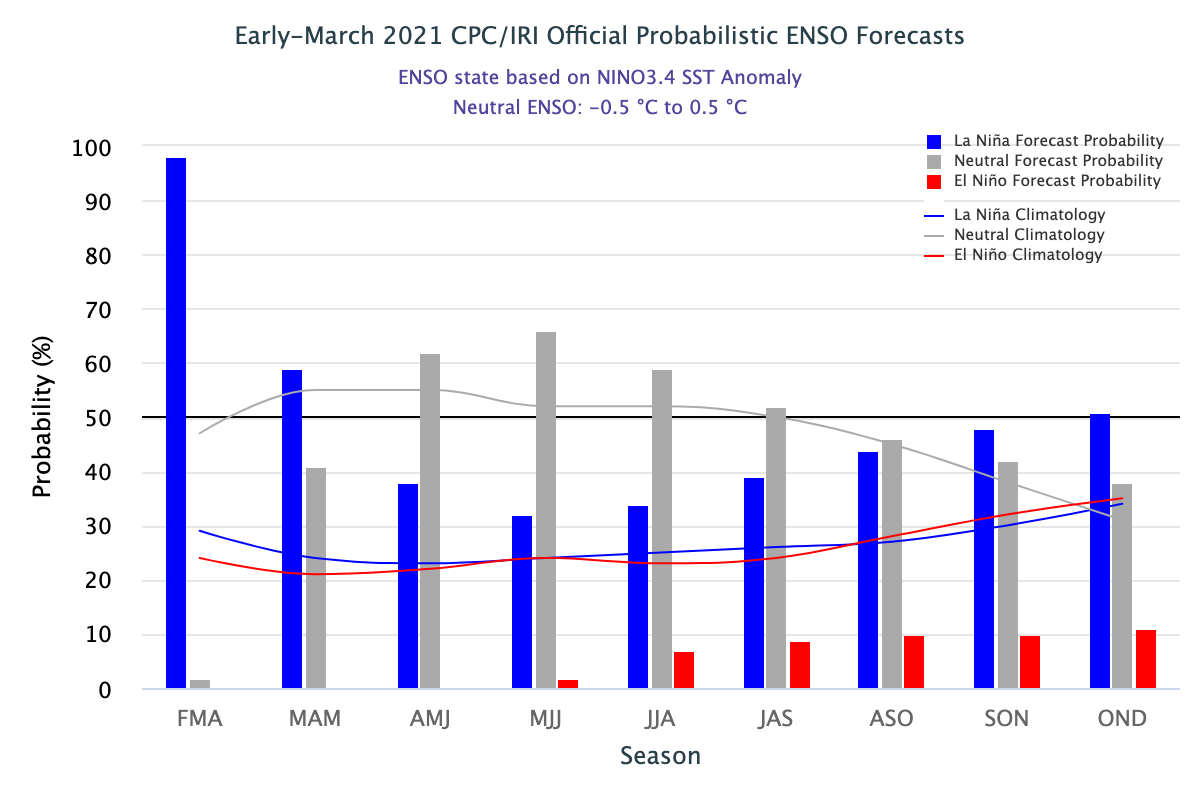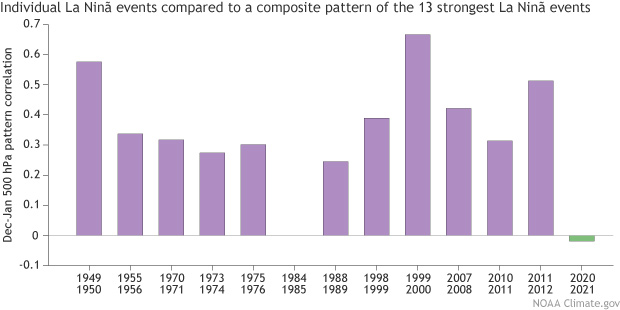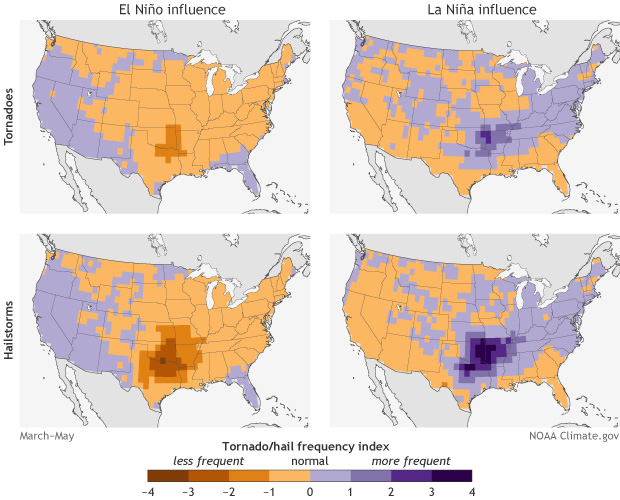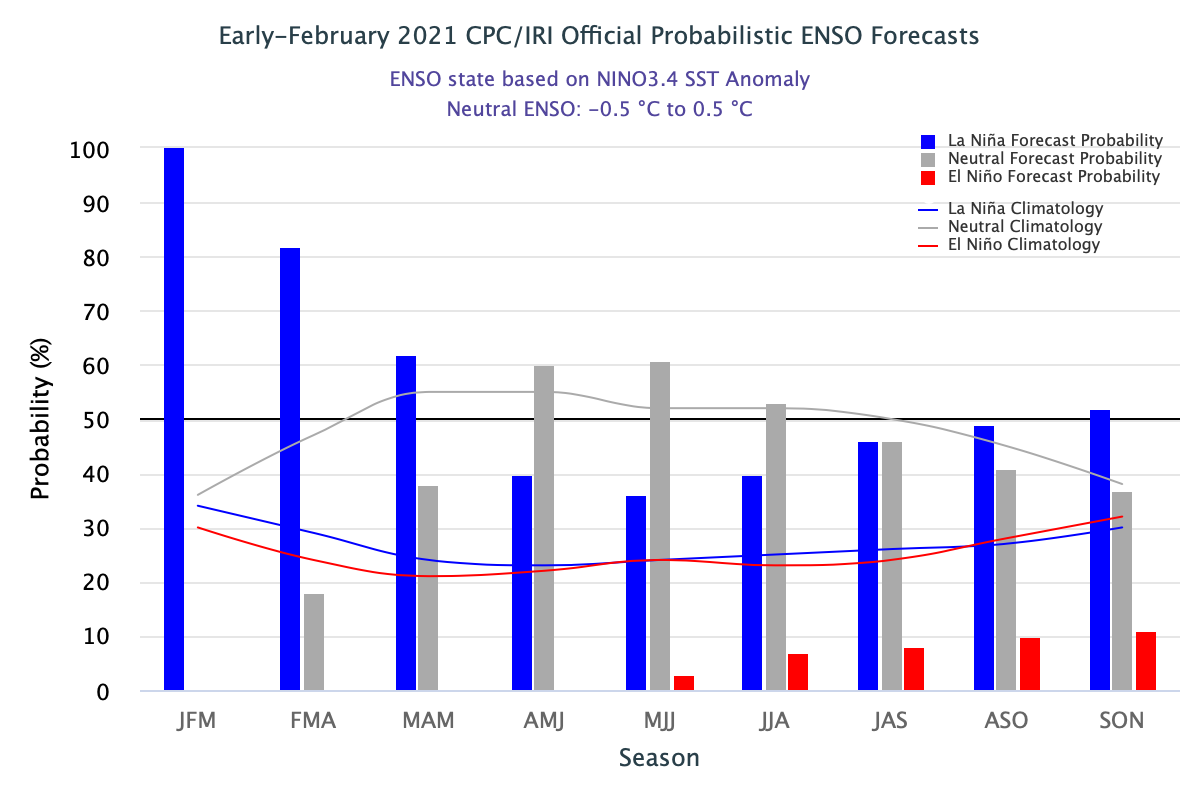El Nino and La Nina
-

The latest ENSO outlook was released today. It shows that La Nina is still hanging on now, but that neutral conditions are expected to return later this spring and last through summer. The current forecast for next fall and winter is for La Nina to return in a “double dip”, which happens fairly frequently with…
-

I’ve heard many complaints about this year’s winter forecast and how far off it was. Here is an excellent discussion of how seasonal forecasts are made and how they can be off. They show that for what we knew in November, a typical La Nina pattern was the most reasonable forecast. The things that changed…
-

I saw an article on Yahoo News about La Nina making tornado season more severe this year. And if you look at the overall tornado season for the country, that seems to be true. But previous research has shown that the area of the most tornadoes just shifts, so that areas west of us get…
-

We are halfway through February, so I thought I would take a look at the climate so far this month. The temperature departure map shows that the southern half of the region is above normal for the month except for a few areas where the rain was the heaviest. This is what we would expect…
-

The latest ENSO outlook was released by NOAA today. It shows that the current La Nina is expected to continue through the March-May period, then neutral conditions are likely to take over. There is now a hint that we could see La Nina return later in the year. Two years in a row of La…
-

In this blog you often hear stories about how La Nina and El Nino affect the weather and climate of the Southeast and other parts of the United States. But we spend less time talking about how it affects other parts of the world, even though historically some of the strongest effects of the ENSO…
-

A quick look at the temperature and precipitation patterns across the Southeast shows that so far this January, the typical pattern of warm and dry conditions across southern parts of the region have not occurred. In fact, the coolest and wettest conditions have occurred where we would normally expect to be warm and dry. Because…